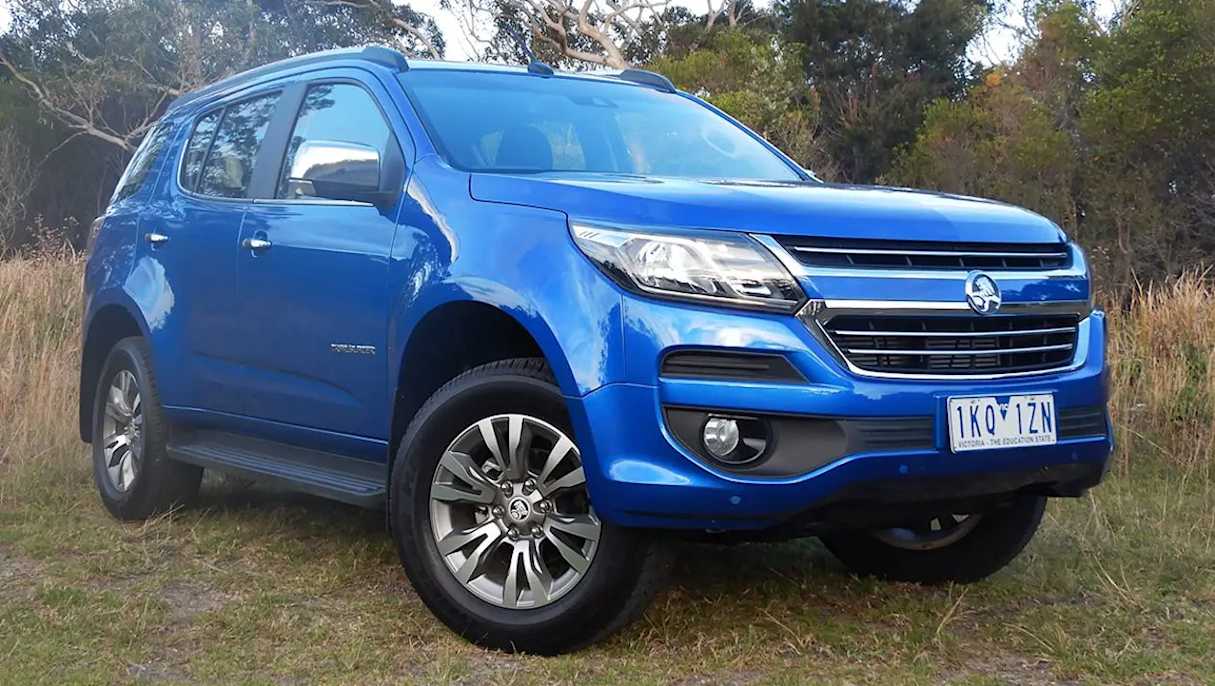Could the Australian car industry have been saved?
It’s a question I’ve been pondering a lot lately, a fascinating ‘what if’ scenario that any passionate Australian car fan has probably played over and over in their head for the better part of a decade.
But there’s a reason why it has been front of mind this week, because unless you’ve been avoiding all mainstream news (and I wouldn’t blame you for doing so) you will have noticed tariffs are dominating the headlines at the moment.
The US government announced that all imported cars into the United States would attract a 25 per cent tariff. The government has made it crystal clear its goal is to sell American-made cars, and it doesn’t matter if that means higher prices for anyone who doesn’t want to buy an imported vehicle.
Putting aside any personal feelings you may have for the current US government, and in particular its President, is this a smart policy? Probably not, largely because the ‘US’ car industry is more of a ‘North American’ car industry, relying on the previous free-trade agreement with Canada and Mexico to get more affordable vehicles into showrooms.
The geography of Detroit being right on the border with Canada means parts and vehicles cross the border several times during production, to the point where the Detroit-assembled Ford F-150 has approximately half of its components from Canada - which will, in theory, also attract a 25 per cent tariff.
While it may be a flawed plan from the US government in 2025, would a similar strategy have worked in Australia two decades ago?

Yes, this is revisionist history and looking through the lens of perfect hindsight, but there were some clear signs at the time that the Australian government was not doing all that it could to protect the Australian car manufacturing industry.
In 2013 then-Treasure Joe Hockey goaded Holden in parliament, demanding the company, and parent General Motors, “come clean” on its plans for Australia. As history demonstrated, General Motors did shut Holden down, but not for another seven years and a clear and obvious attempt to make it a viable import-only brand.
Hockey was seemingly upset that the car industry, which comprised Ford and Toyota as well, was seemingly unhappy with the $1 billion worth of support the federal government was providing.

“There’s a hell of a lot of industries in Australia that would love to get the assistance the motor vehicle industry gets,” Hockey said in parliament.
Which is another way of saying, be grateful for what you have because we’re not giving you anymore and we don’t care what happens.
What Hockey didn’t highlight at the time, was that while the car industry was getting $1b, the government was handing over $4b worth of subsidies to the mining industry. The government also supports agriculture, fishing, energy, tourism and several other industries to stimulate jobs and the economy.

But it was happy to let the Australian car industry, which made us one of only 13 nations that could take a clean sheet of paper and end with a mass-produced car, wither and die.
Of course, it wasn’t quite that simple, the Australian car industry had evolved massively over the decades, with the likes of the Holden Commodore and Ford Falcon going from near-compulsory purchases for Aussie families to a relatively niche product, with the rise of SUVs and more polished small cars.
The writing was on the wall when the Mazda3 hatchback knocked the Commodore off top spot on the sales charts in 2011.

Put simply, the economies-of-scale had tipped out favour for the local manufacturers. The factories here were designed on the principle of the Commodore and Falcon being best-sellers, with nearly 100,000 of each finding buyers each year. By the time the little Mazda bumped the Commodore to second place, it was selling only 40,000 units a year.
The truth is the seeds of the manufacturing industry’s demise were sown back in the mid-1980s, when then-Prime Minister Bob Hawke empowered Senator John Button to develop the Motor Industry Development Plan - more commonly known as the Button Plan. At that time there were 13 different vehicles being produced in Australia including the Mitsubishi Magna, Nissan Pulsar, Nissan Patrol and Toyota Corolla in addition to the more well-known models from Ford and Holden.
In simple terms, Button’s plan removed the protections given to the Australian car industry by reducing the, you guessed it - tariffs.

Back in the ‘80s tariffs on imported vehicles into Australia were as high as 60 per cent, which is why the industry was so strong and diverse. The government began cutting the tariffs each year until they were down to 15 per cent by 2000 and almost gone by the end of that decade… which coincided with the demise of the local manufacturing industry.
The last Ford was built in October 2016 and Holden and Toyota were done by the end of 2017.
Now, this is where we get into the political and social aspects of this story, and I’ll admit I can see an argument for both sides. On the one hand, supporting the car industry with tax-payer dollars seems unreasonable, especially when overseas companies like General Motors, Ford and Toyota are making huge profits. However, as previously mentioned, we pour billions of tax-payer dollars into the mining sector to make individuals and corporations richer, instead of having an Australian 'sovereign wealth fund’ like the Middle East or Norway have managed with their natural resources.

So what’s my much-too-late solution? I think we should have adopted the US tariffs that have worked well for the past six decades, the so-called ‘chicken tax’. This is a 25 per cent tariff on imported light trucks, which was implemented during a 1960s trade war between the USA against France and Germany, with the European nations putting a tariff on the importing of American chickens to their country (hence the name).
This tariff has allowed the Ford F-150, Chevrolet Silverado and Ram 1500 to thrive, but it also motivated Toyota (Tundra and Tacoma), Honda (Ridgeline) and Nissan (Frontier and Titan) to build their own light trucks within the US.
So my proposal would have been for the Australian government to implement its own ‘chicken tax’ and keep tariffs off most vehicles but then add a 25 per cent tax on utes and ute-based SUVs. This would have allowed Holden, Ford and Toyota to build their respective Colorado, Ranger and HiLux, as well as the spin-off, Trailblazer, Everest and Fortuner locally instead of Commodore, Falcon and Camry, and benefit from a major advantage of their imported rivals.

While not a perfect solution, the reality is the market has shifted this way anyway, with the Ranger and HiLux effectively this generation's Falcon and Commodore. Sure, this would have been a deeply unpopular move with the likes of Nissan, Mitsubishi, Volkswagen and others, but that's the nature of doing business in a global economy.
Looking at the raw numbers, it would appear to stack up well from an economies-of-scale perspective, with Ford selling more than 89,000 Rangers and Everests in 2024, which are the kind of numbers the company rolled off the production line in the glory days of the Falcon.
Toyota managed more than 56,000 HiLux and Fortuners, which is impressive when you consider the Fortuner is the brand’s fourth-string family SUV behind Prado, Kluger and LandCruiser.

As for Holden, as Ford and Isuzu are currently demonstrating, the brand could have survived with effectively a two-product line-up - a ute and large SUV - with anything else just a bonus. Imagine a 2025 Holden/GM showroom with Colorado, Trailblazer, Corvette and Silverado, with Cadillac replacing the old HSV spaces. It could have worked really well for both the company and Australian buyers.
Instead, we gave up on our industry, we gave up on making things here and regardless of your political beliefs, I think that’s sad. Australia was a very capable country but we gave that away for what were meant to be cheaper imported cars. But as history has demonstrated, with no more local competition to keep prices down, the market has accelerated faster than inflation and left us all paying more.
This is certainly a rose-tinted view of the industry and the recent past, I admit that, but it’s hard not to be disappointed when you wonder what could have been…














.jpg)
.jpg)


.jpg)








.jpg)

.jpg)
.jpg)